Fractions Teaching Resources
Make math lesson planning a breeze with printable fractions worksheets, fun activities, games, and more teaching resources for the elementary classroom.
This collection of curriculum-aligned printable and digital resources has been created just for teachers by the teachers on the Teach Starter team. That means each resource has undergone an in-depth review before being published to ensure it's ready for the classroom and your students! Inside this collection, you'll find editable resources you can easily differentiate for individual learners plus math center activities and fun games to help students understand how to add and divide fractions and more.
New to teaching this section of the math curriculum? Read on for a guide to all things fractions from our teacher team!
What Are Fractions?
It may be basic, but we need to start somewhere! Fractions are, of course, mathematical expressions that represent a part of a whole or a ratio of two quantities. Fractions can be used to represent quantities that are not whole numbers, and they are an important part of arithmetic, algebra, and other areas of math that our students explore throughout their elementary and high school education.

Understanding numerators and denominators is an essential skill as students dive into adding, subtracting, multiplying, and dividing fractions.
Next, let's dive into the most common topics we cover when we're teaching fractions!
Proper Fractions vs. Improper Fractions
Teaching fractions involves teaching students a lot of new vocabulary! Two terms your class will need to know early on in your lessons are:
- Proper Fractions: This is a fraction where the numerator (the top part) is less than the denominator (the bottom part). A proper fraction represents a value that is between 0 and 1. For example, 1/2 is a proper fraction because the numerator (1) is less than the denominator (2).
- Improper Fractions: This is a fraction where the numerator is greater than or equal to the denominator. An improper fraction represents a value that is greater than or equal to 1. For example, 3/2 is an improper fraction because the numerator (3) is greater than the denominator (2).

What Is a Unit Fraction?
We told you there was a lot of vocabulary involved! A unit fraction is a fraction whose numerator is 1 and whose denominator is a positive integer.
For example, 1/2, 1/3, 1/4, etc., are all unit fractions. Unit fractions are also examples of proper fractions, as they are always less than 1 in value.
When working with unit fractions in your classroom, students learn to represent these fractions with visual models where one piece of a partitioned shape is shaded in. Students also learn to build larger fractions by grouping unit fractions together.
As an example, 1/8 + 1/8 + 1/8 = 3/8.
What Is the Least Common Multiple?
Working on fractions with your upper elementary students? You may be tackling the least common multiple this school year. So let's talk about what that means. The least common multiple is another important term to define before diving into adding, subtracting, or comparing fractions.
Sometimes called the LCM, the least common multiple of two or more numbers is the smallest positive integer that is divisible by all of the numbers.
In order to find the LCM of two or more numbers, you can teach students to use one of several methods, including:
- The prime factorization method
- The listing method
- The division method

How Do You Add Fractions?
Once students understand the basics of fractions, it's time to teach how they work in relation to the different operations. We'll start with addition.
To add two or more fractions, students will need to:
- Find a common denominator (also known as the least common denominator or LCD) that is a multiple of the denominators of all the fractions. A common denominator can be found by finding the least common multiple (LCM) of the denominators.
- Once students have found the common denominator, they need to learn to convert each fraction so that it has the same denominator as the others. This is done by multiplying both the numerator and denominator of each fraction by the same number so that the denominator is equal to the common denominator.
- After converting the fractions to have the same denominator, they can add the numerators of the converted fractions.
- The denominator will be the least common denominator that was found earlier.
How Do You Subtract Fractions?
Finding the sum of fractions is one thing, but how do students find the difference?
- Students will once again need to find a common denominator — a common multiple of the denominators of the fractions.
- Once they have found a common denominator, they can convert each fraction so that it has the same denominator as the others.
- After converting the fractions to have the same denominator, students can subtract the numerators of the converted fractions to find the numerator of the difference. The denominator of the difference will be the common denominator that they found earlier.
How Do You Multiply Fractions?
Once students have adding and subtracting fractions down, they might find that multiplying is a lot simpler!
To multiply two or more fractions, you simply multiply the numerators (the top parts) together to get the numerator of the product, and then multiply the denominators (the bottom parts) together to get the denominator of the product.

How Do You Divide Fractions?
It's time for one last operation! Dividing fractions is one of the more complicated processes elementary students will have to handle when it comes to working with fractions. They will need to know how to invert fractions before they can dive in, aka flipping the numerator and denominator.
To divide fractions, teach students to:
- Invert the second fraction.
- Multiply the two fractions.
- Simplify the quotient — if possible — by finding the greatest common factor of the numerator and denominator and dividing both by it, to get the final answer in simplest form.
How Do You Simplify Fractions?
Simplifying a fraction is pretty, well, simple! It means reducing it to its simplest form. To do this, students will find an equivalent fraction that has the same value but with a smaller numerator and denominator. The numerator and denominator of a simplified fraction have no common factors other than 1.
To simplify a fraction, you can divide both the numerator and denominator by their greatest common factor. You'll then need to keep dividing by the greatest common factor until it is equal to 1, which means that the fraction can't be simplified any further. And there you have it — a simplified fraction!
- Plus Plan
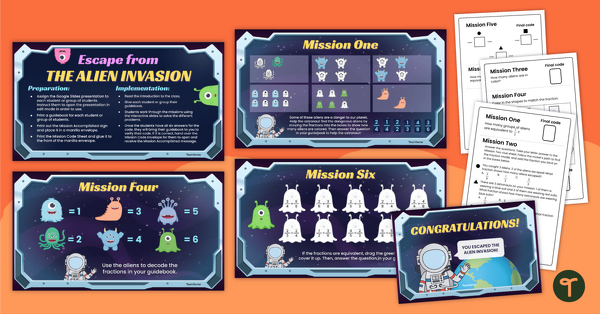
Escape From the Alien Invasion – Math Escape Room (Basic Fractions)
Save the planet from the alien invasion by identifying fractions, comparing fractions, creating models, and more with an exciting digital escape room.
- Free Plan
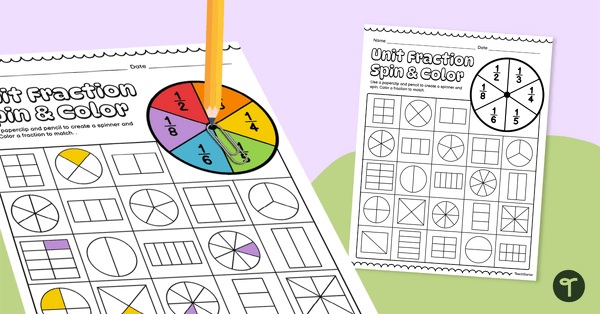
Unit Fraction Spin and Color Activity
Read and color unit fractions in this fun spin and color activity with your students.
- Free Plan
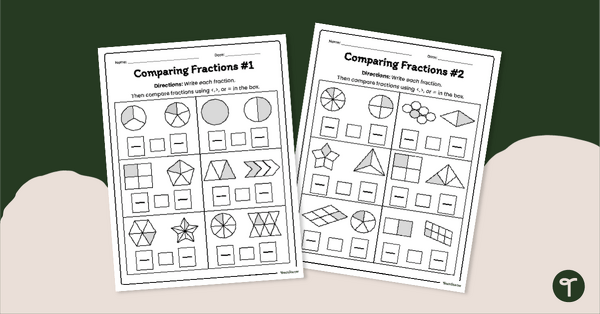
Comparing Unit Fractions Worksheets
Compare different unit fractions using this teacher-created set of worksheets.
- Free Plan

Icing Unit Fractions Worksheet
Explore unit fractions with your students using this fun donut-themed unit fraction worksheet.
- Free Plan

Sorting Unit Fractions Cut and Paste
Sort different unit fraction visualizations with these cut-and-paste unit fraction worksheets.
- Plus Plan
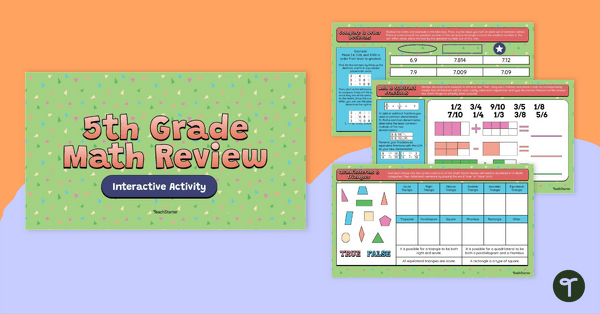
5th Grade Math Review – Google Slides Interactive Activity
Review important 5th-grade math standards with a student-led interactive activity that covers 12 different mathematical concepts.
- Free Plan
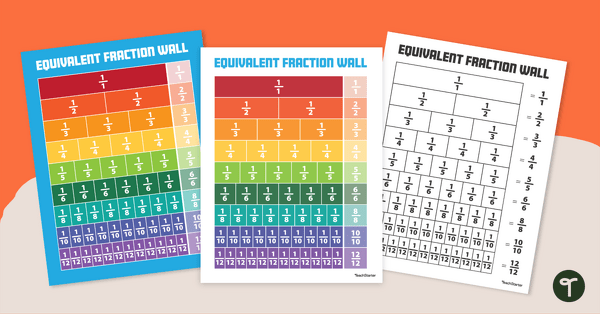
Equivalent Fraction Wall - Poster
Guide students to develop an understanding of fractions with the same value by using an equivalent fractions chart in your classroom.
- Plus Plan
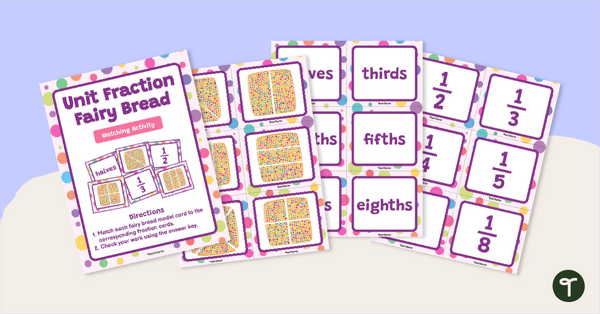
Unit Fraction Fairy Bread Matching Activity
Sort and match fairy bread model cards to the corresponding unit fraction cards.
- Plus Plan

3rd Grade Fractions – Math Assessment
Assess student understanding of fractions on a number line, comparing fractions, equivalent fractions, and more with this math test for 3rd grade.
- Plus Plan
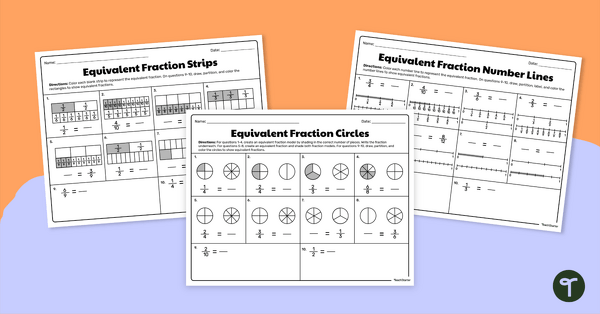
Equivalent Fractions – Worksheet Pack
Use fraction models, strip diagrams, and number lines to determine equivalent fractions with this worksheet pack.
- Free Plan
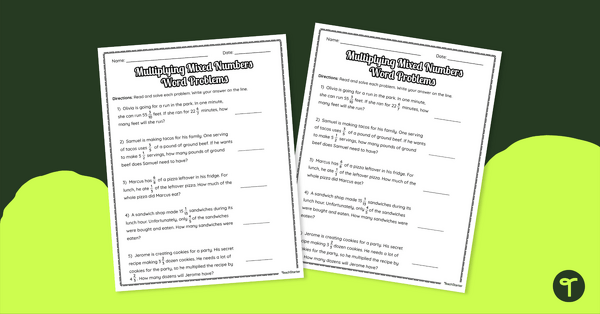
Multiplying Mixed Numbers – Word Problem Worksheet
Solve a variety of word problems with this multiplying mixed numbers worksheet.
- Free Plan
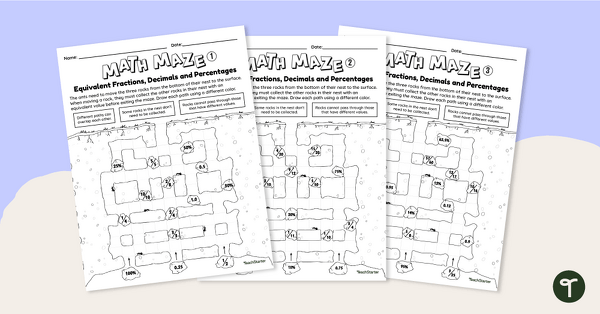
Math Mazes (Equivalent Fractions, Decimals, and Percentages)
Determine equivalent fractions, decimals, and percentages with this puzzling math maze.
- Plus Plan
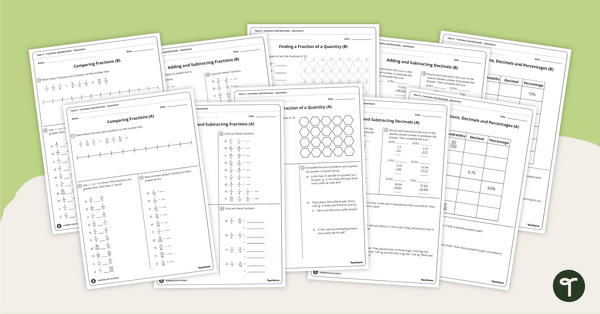
Fractions, Decimals and Percentages Worksheets
Use these fractions, decimals and percentages worksheets in your upper elementary classroom for independent practice or as an assessment activity.
- Free Plan
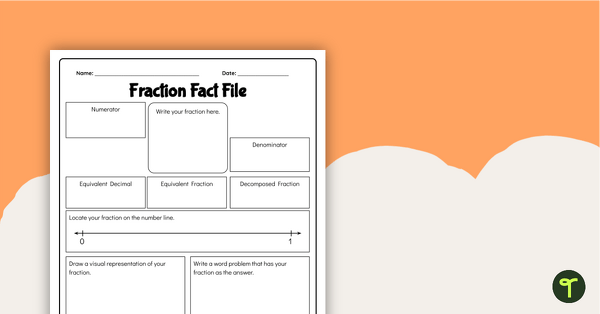
Fraction Fact File Worksheet
Explore all things fractions with this one-page printable worksheet.
- Free Plan
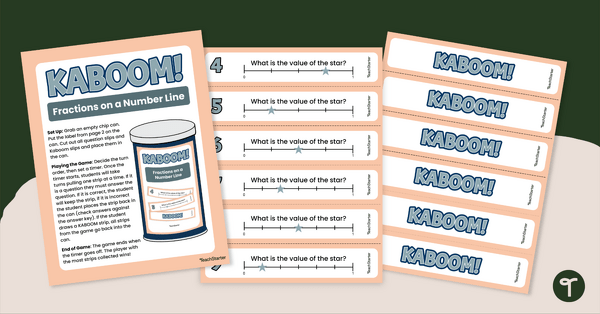
Fractions on a Number Line – Kaboom Game
Practice identifying fractions on a number line with an exciting game of Kaboom!
- Free Plan
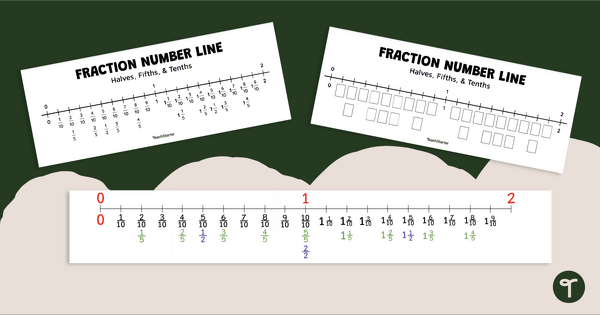
Fractions on a Number Line - Halves, Fifths, and Tenths
Demonstrate the concept of fractions on a number line with a printable fraction number line display and student reference sheets.
- Plus Plan
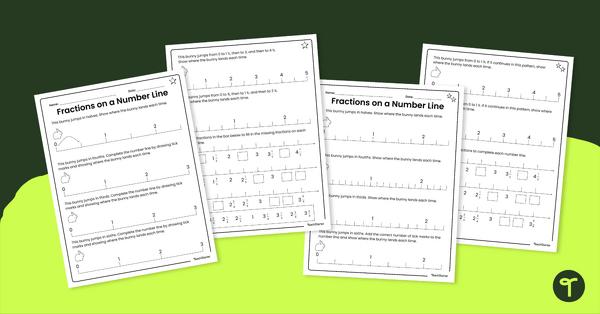
Fractions on a Number Line – Differentiated Worksheets
Practice counting by and plotting fractions on a number line with this set of differentiated worksheets.
- Free Plan

Unit Fractions – Deck of Cards
Use this deck of 30 cards to practice different concepts with unit fractions.
- Free Plan

Halves and Fourths – Cut and Paste Worksheet
Practice sorting objects partitioned into halves and fourths with this cut-and-paste worksheet.
- Plus Plan

Equivalent Fractions – Instructional Slide Deck
Teach your students how to find equivalent fractions by using a number line, shaded models, or a fraction chart with this instructional slide deck.
- Free Plan
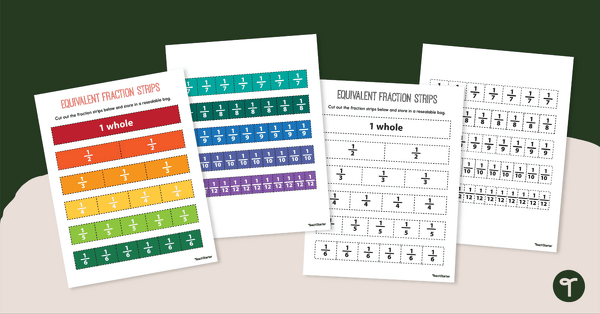
Fraction Strips
Promote hands-on learning in your classroom with this set of printable fraction strips.
- Plus Plan
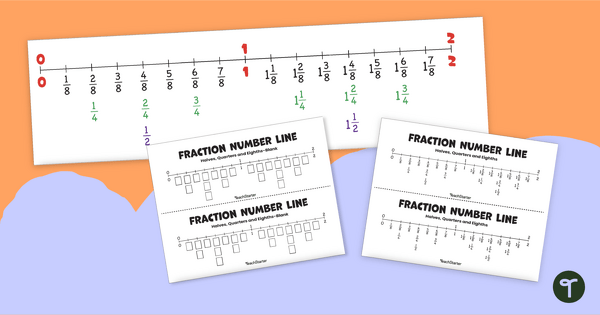
Fractions on a Number Line - Halves, Quarters, and Eighths
Demonstrate the concept of fractions on a number line with a printable number line display and student reference sheets.
- Free Plan
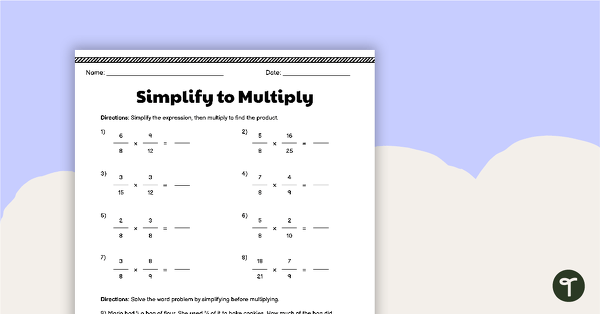
Simplify to Multiply – Multiplying Fractions Worksheet
Practice how to simplify fractions before multiplying with this worksheet.
- Plus Plan
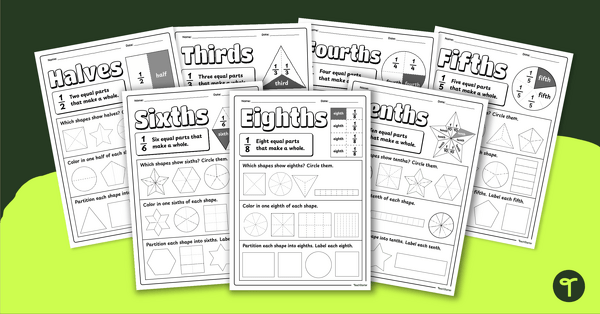
Introduction to Unit Fractions Worksheet Pack
Introduce your students to unit fractions with this set of teacher-created worksheets.
- Plus Plan

Unit Fractions Clip Cards
Practice unit fractions with this set of unit fraction clip cards ready to use in the classroom.
- Plus Plan
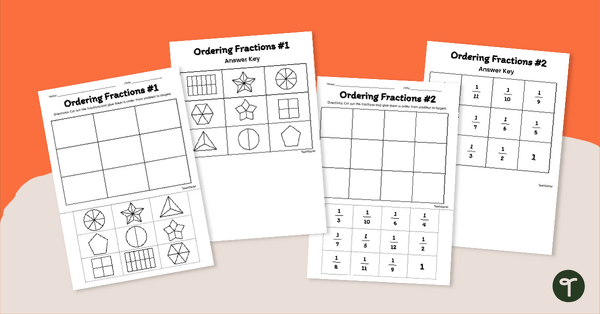
Ordering Unit Fractions Cut and Paste
Practice ordering visual representations of unit fractions and their fraction with this set of worksheets.
- Plus Plan
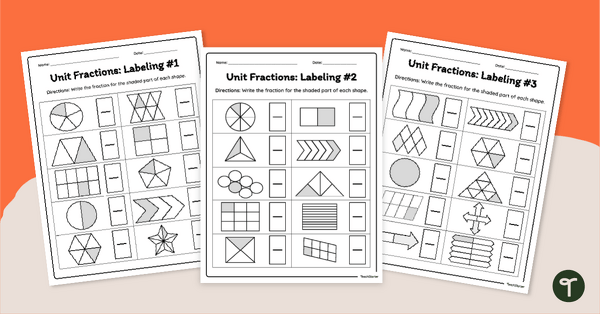
Label the Unit Fraction Worksheets
Label different unit fractions with this set of student worksheets.
- Plus Plan

Unit Fraction Coloring Sheet
Crack the color code and practice unit fractions all while coloring some fun images.
- Plus Plan
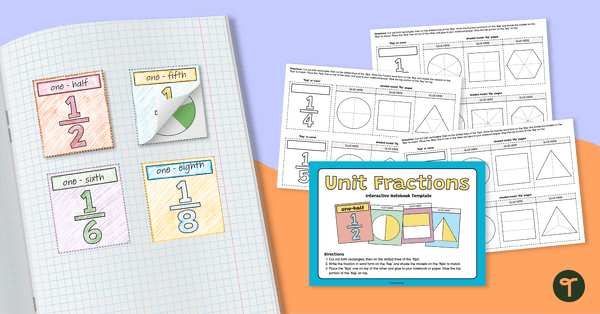
Unit Fraction Interactive Notebook Template
Engage students in a fun unit fraction activity to stick in their math workbooks using this interactive mini flipbook templates.
- Plus Plan
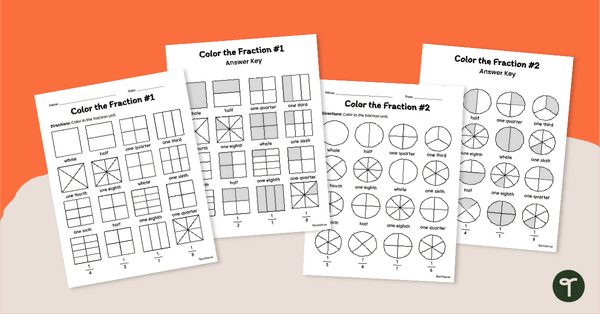
Identify Unit Fractions Worksheets
Color the different fraction units to show different unit fractions with this set of worksheets perfect for your budding mathematicians.
- Plus Plan
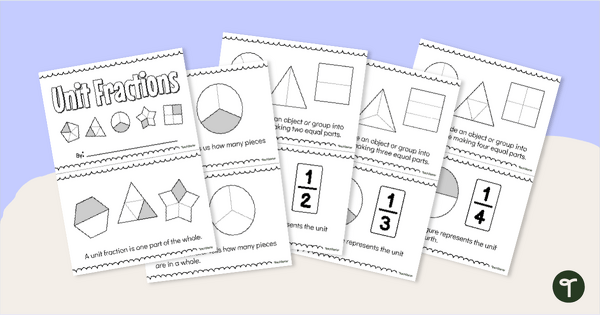
Unit Fraction Mini Book
Explore unit fractions with your students using this fun printable mini book.
- Plus Plan
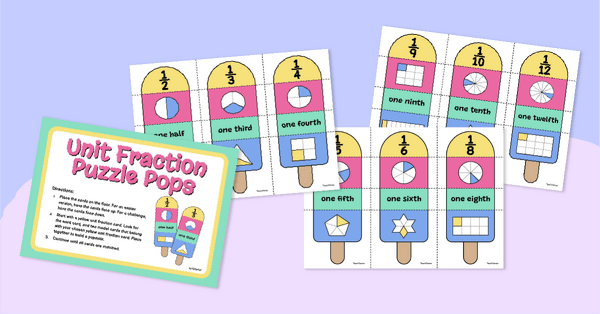
Unit Fraction Puzzle Pop Match
‘Pop’ in a bit of extra practice with unit fractions using this fun set of Unit Fraction Puzzle Pops!
